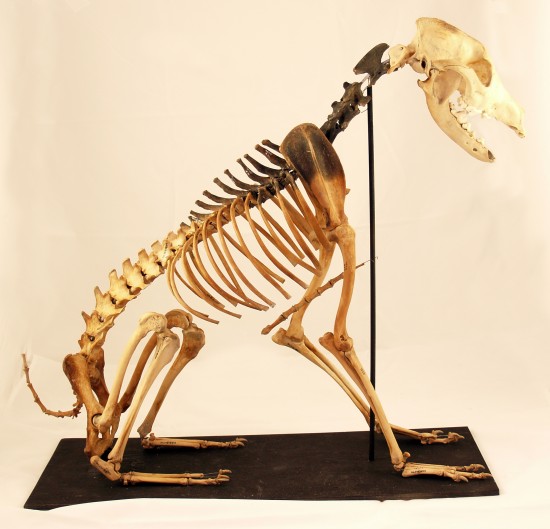Located within the Portsmouth Historic Dockyard, Portsmouth, The Mary Rose Museum is home to what is left of Henry VIII’s favourite warship.
Mary Rose sank during the Battle of the Solent in 1545. Through a mammoth effort, it was recovered from the Solent sea-bed in 1982. Her hull and contents are a truly significant national discovery, and has provided an invaluable insight into the Tudor period. May 2013, the Mary Rose Museum was opened, housing the hull and many thousands of its Tudor artefacts.
Now a team of international scientists working on the remains have discovered that the smallest member of the Mary Rose crew – the ship’s dog – was a he, and not a she as was previously believed.
The skeleton of the dog lacked a baculum, or penis bone, and so was thought for many years to be that of a female dog. The dog, named “Hatch” by researchers, was discovered in 1981 during the underwater excavation of the ship, which sank defending Portsmouth from a French invasion in 1545.
However recent developments in DNA analysis have found that Hatch was a young male dog, most closely related to modern Jack Russell Terriers, with a brown coat.
Extracting the DNA from one of the dog’s teeth to identify the breed of the dog, its gender and even the colour of its fur, the team were even able to ascertain that the dog was carrier for the canine genetic disorder hyperuricosria. This causes dogs to produce urine with very high levels of uric acid and can lead to bladder stones, and less frequently kidney stones.
Dr Garry Scarlett, lead researcher of the study and associate head academic in the school of biological sciences at the University of Portsmouth said: “We. This technique could now be applied to further museum specimens, meaning we could find out more about previously unknowable animals.”
Recovered over a period of several months, the dog’s skeleton was found partially outside the carpenter’s cabin, the rest inside, under a pile of chests belonging to the carpenter and several gunners. The dog’s skeleton is on display in the new Museum.

